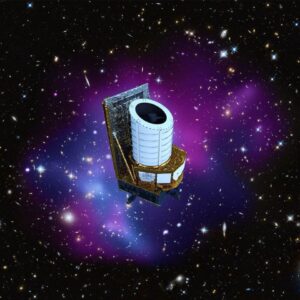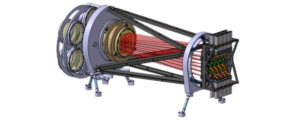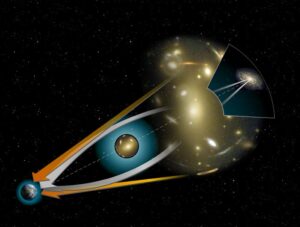PageContent
EUCLID
INFN National coordinator: Luca Stanco (INFN sez. Padova)
Local Coordinator: Gabriele Sirri
Local Group: T. Chiarusi, D. Di Ferdinando, A. Margiotta, N. Mauri, L. Patrizii, G. Sirri, M. Spurio, M. Tenti, C. Valieri.
General Objectives: Euclid is a class M space mission of the ESA, European Space Agency, for astrophysics and astronomy, which aims at investigating the nature of dark matter and dark energy of the Universe.

The launch, scheduled for 2022, will take place in French Guyana through a Soyuz rocket. The satellite will orbit at the Lagrangian point L2 of the Earth-Sun system about 1.5 million km from the earth, and will take about 6 months to reach this privileged vantage point for observing the Universe.
Cosmologiy studies conducted until now confirm that the Universe is in accelerated expansion and one of Euclid’s principal purpose is to understand the nature and properties of the source responsible for this acceleration, still unknown, and therefore called “Dark Energy”. Dark Energy represents about 75% of the energy content of the universe and, together with dark matter, dominates the matter-energy content of the Universe. Both have a mysterious and unknown nature but affect the past, present and future evolution of the Universe.
Euclid’s observations will allow to shed some light on the way the Universe has evolved over the past 10 billion years and address fundamental physics and cosmology issues related to the nature of Dark Energy, dark matter and gravity. The observations will allow us to know the physics of the primordial universe and the initial conditions which represent the seed of the formation of cosmic structures.

The Euclid satellite, composed of a 1.2 m diameter telescope, has the peculiarity of being equipped with two scientific tools that produce complementary observations: a camera that operates in the visible (VIS – VISIBLE imager) and a spectrum-photometer in the near infrared (NISP – Near Infrared Spectrometer and Photometer).

The two tools allow to use “gravitational weak lensing” and “Galaxy Clustering” techniques, that will allow to measure the distribution of matter in the universe with high precision, thus verifying its distribution models, experimentally confirming the predictive equations of the evolution of the Universe and probing the effects of gravitation on a very large scale. Of great importance will also be the Euclid contributions to neutrino physics.
Activities: The Bologna group shares the responsibility of Warm Electronics (WE) for the NISP instrument with their colleagues in Padua. The Instrument Control Unit (ICU) and the Data Processing Unit (DPU) are the main part of WE. The Bologna team has validated and tested all the ICU models. The group ha also participated to the writing of the sequences and in the Termo Vacuum tests activities at the ERIOS chamber at the Laboratoire de Astrophisique de Marseille (LAM) in Marseille.
For further information see the official website of Euclid Consortium.












